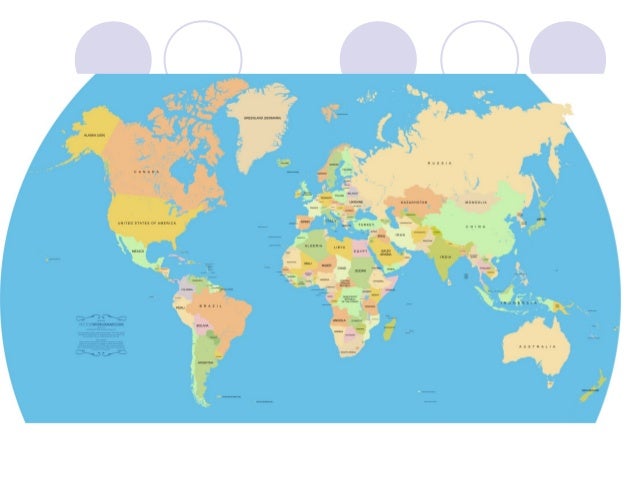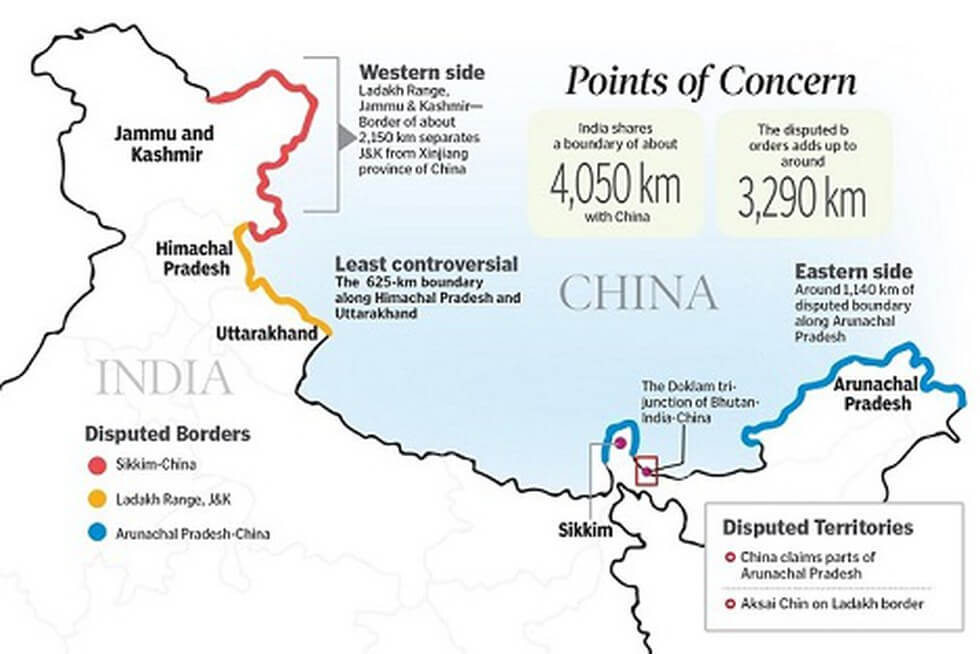Locational Boundary Disputes. Disputes over how a border should be operated or controlled. Example: The US/Mexican Border in regards to immigration and transport of goods. Operational Boundary Disputes. Disputes over natural resources (mineral deposits, fertile farmland.
There are hundreds of disputes between states today that derive from disagreements over shared boundaries or territory that each claims. These disputes arise for many reasons, but the desire for territorial expansion, irredentism, an historic lack of cartographic precision, or disagreements over formal, written documents are common causes.

- Abstract Recently there has been a flare-up of several significant international border disputes. This study examines when these disputes are most likely to arise, when they will escalate into war, and when they will spread beyond the original national participants.
- NAIROBI, Kenya, Mar 6 – An Ethiopian-led mediation process kicked off in Nairobi Wednesday to resolve the latest diplomatic row between Kenya and Somalia over a 62,000 square miles triangle of disputed maritime territory in the Indian Ocean.
Allocational Boundary
In general, every boundary dispute can be classified in one of four ways: positional (also definitional), territorial (also locational), allocational (also resource), or operational (also functional). This classification gives insight to the reason for the dispute.
Positional disputes are often also referred to as definitional disputes because the two parties hold differing interpretations of the written description (or definition) of the boundary. These written documents, often treaties, might include language that each state interprets differently, especially if there are ambiguous or poorly worded phrases.
For example: In 1825, Britain and Russia signed a treaty to establish territorial claims in what today is Alaska. The treaty stated: “the said line shall ascend to the north along the channel called Portland Channel as far as the point of the continent where it strikes the 56th degree of north latitude; from this last-mentioned point, the line of demarcation shall follow the summit of the mountains situated parallel to the coast as far as the point of intersection of the 141st degree of west longitude.” The vague phrase about the mountains, was further clarified, but it remained indefinite. When the US acquired Alaska in 1867 from Britain, it inherited the dispute. It was partially resolved in 1903, but affected US-Canadian and US-British relations for decades.


Locational Border Dispute Resolution
While territorial may sound the same as positional, it is not. In the case of border disputes, a locational dispute is not over the written definition or treaty that established the border. Rather, these disputes most often occur when the border is physical, such as along a river or in mountains. Many of these borders were set when precision in those regions was not considered critical for clarification. In other cases, the physical border may have changed over time, such as a river changing course. In such an instance, the river border, as written in the definition, is not disputed, but the location has changed and land that once belonged to one state might now be claimed by the neighboring state.
For example: The border between Uganda and the Democratic Republic of Congo was always considered the River Semliki. However, since 1960, the rate of mountain glacier melt has increased and the river’s course has changed many times. Satellite imagery reveals over 100 changes and widened considerably in that time. In turn, some towns that were once Ugandan and now Congolese and vice versa. The changing location only became one of concern and dispute when the area containing oil was affected by the changing course.
While the Semliki river example clearly demonstrates a locational dispute, the dispute could evolve to be a resource one, as well. In allocational disputes, states disagree about the rights to or proportionate distribution (allocation) of natural resources in the border region. These disputes are almost always the mineral, oil, natural gas, or water resources that do not coincide with human-created political borders.
For example: The massive Rumaila oil field lies beneath Iraq, with a small section underlying Kuwait. It is of incredible significance to Iraq, as it is considered the third largest field in the world. In the years leading up to Iraq’s invasion of Kuwait in 1990, Saddam Hussein accused Kuwait of producing more oil than treaties established, alleging that Kuwait was slant-drilling into Rumaila to drill for oil under Iraq. This claim was used to justify Iraq’s military attack in August 1990.
Operational (or functional) disputes arise when two states disagree about the official management of the border. People and goods cross borders, for both good and malicious reasons. In order to protect the security and economic interests of the state, the government must actively manage its borders. Disputes may be related to the erection and maintenance or border markers, fences, or walls; immigration policies and border control; and cross-border transportation of goods, both legal and illegal.

For example: The US and Mexico are in regular communication because of disagreements about the shared responsibility of controlling the massive, shared border. The daily exchange of illegal drugs in both directions is the source of one such dispute. Both states agree it is a shared responsibility to stem the flow of the illicit products. However, the two regularly disagree over the specific strategies to employ and degree of financial responsibility of each government. Complicating the issue is that both the US and Mexico are federal states, so each US border state and each Mexican border state are involved in the border’s operation.
As is clearly evident, there are many potential sources of conflict along international borders. Some of these disputes cause little harm and are rarely discussed between the states. However, some current disputes are the source of daily violence and the loss of life.

Political Morphology
The Heartland Theory
In the Heartland Theory, Halford Mackinder describes how the regions of the world that have managed to prosper due to maritime power exist on the “Rimland” (Britain, China, India) of the “World Island”. Eventually, he argues, the land power of the “Heartland” (Russia, Central Asia) will overpower the maritime power of the “Rimland”.
Types of Nations
Compact : The distance from the center to the boundaries of the state is fairly similar
Ex: Poland
Prorupt : The state has a region that extends from a compact main region
Ex : Thailand
Elongated : The state is long and narrow and usually leads to problems with connectivity
Ex : Chile
Fragmented : The states consists of numerous different pieces of territory
Ex : Indonesia
Perforated : The state has one or more other states entirely within the confines of its borders
Ex : South Africa
Exclave : A state with another discontinuous piece of territory
Ex : United States
Enclave : A state wholly surrounded by another state
Ex : Lesotho
Border Creation
Geometric Borders
Based on a grid system, usually drawn out before any large settlements are made or land is expressly surveyed.
Ex : Canada & the US west of the great lakes, US State borders West of the Mississippi river.
Physical-Political Borders
Based on an agreed upon border that usually has historical context.
Ex : The United States and Mexican border along the Rio Grande River, the border between Kentucky & Ohio on the Ohio River.
Boundaries
Border Making Process
Define : A treaty is established to define the extent of a nation’s territory.
Delimit : The actually borders are drawn out on a map.
Demarcate : The states place markers and reminders of where the borders are.
Administrate : The states maintain the border and oversee what can goes between the states.
Boundary Disputes
Allocational : A dispute over how the resources around the boundary should be used
Ex : Oil fields between Kuwait and Iraq
Locational : A dispute over where the boundary actually is
Ex : India, China, and Pakistan all fighting over who controls Kashmir
Definitional : A dispute in how the boundary is expressed in a treaty
Ex : Israel and Palestine refusing to acknowledge the borders of either nation
Operational :
Ex : The US maintaining a strict border control policy to keep people from immigrating illegally from Mexico, while Mexico does nothing to halt emmigration.
List Of Border Disputes
- Possible Misconceptions
- Locational & Definitional Boundaries are the same
- A locational boundary dispute would have an actual dispute over who controls what and where the borders end and begin, a definitional boundary dispute is within the treaty and would detail who controls what in this example. 'The border between the Eastern and Western America (fictional states) lies along the Mississippi river, however, the Mississippi River doesn't go all the North through Minnesota, so a definitional dispute arises over who controls what north of the Mississippi.'
- The US/Canada border west of The Great Lakes is a physical-political boundary
- Even though this border is marked by a physical feature (The Great Lakes), the border is a straight line based on a grid and does not follow any physical feature so it is a geometric border.